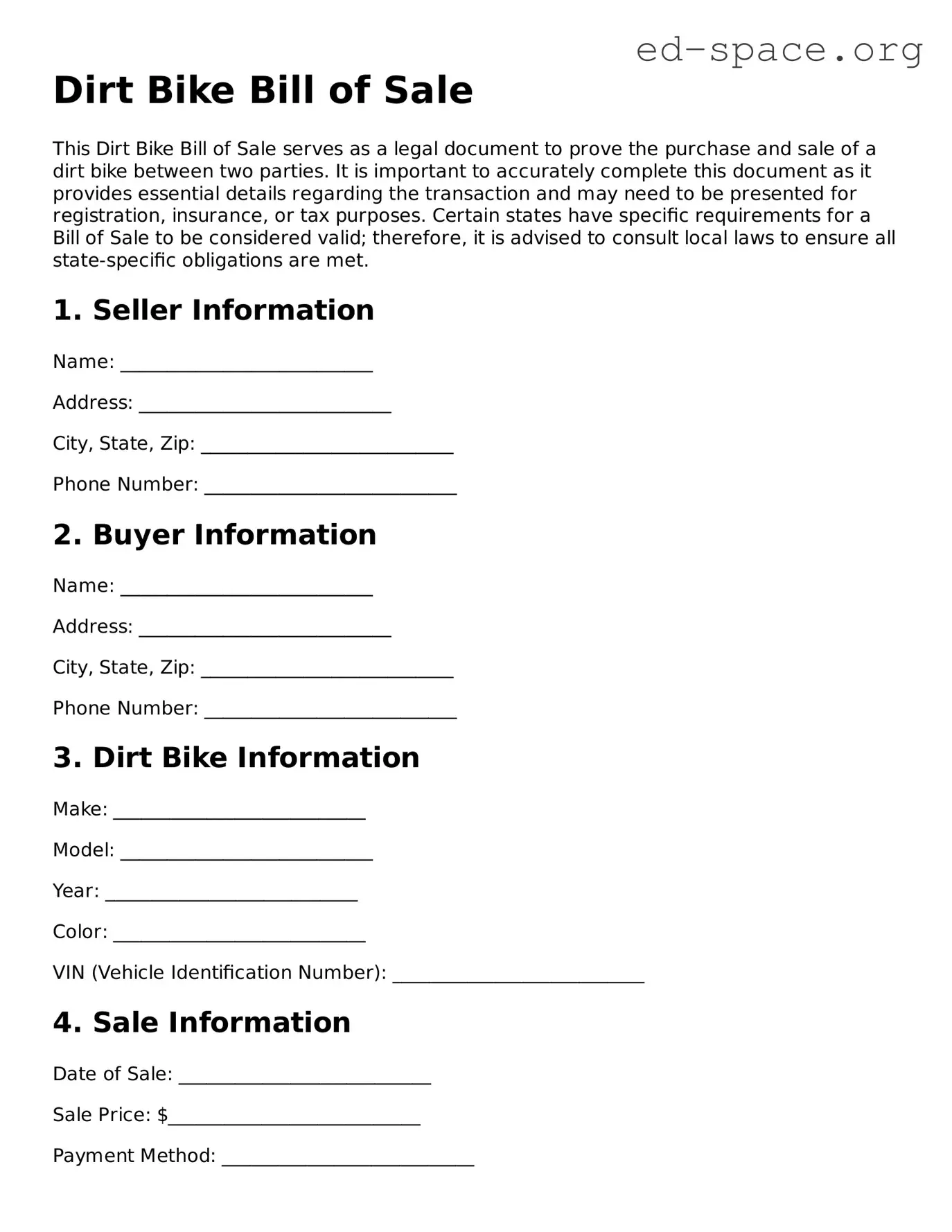Dirt Bike Bill of Sale
This Dirt Bike Bill of Sale serves as a legal document to prove the purchase and sale of a dirt bike between two parties. It is important to accurately complete this document as it provides essential details regarding the transaction and may need to be presented for registration, insurance, or tax purposes. Certain states have specific requirements for a Bill of Sale to be considered valid; therefore, it is advised to consult local laws to ensure all state-specific obligations are met.
1. Seller Information
Name: ___________________________
Address: ___________________________
City, State, Zip: ___________________________
Phone Number: ___________________________
2. Buyer Information
Name: ___________________________
Address: ___________________________
City, State, Zip: ___________________________
Phone Number: ___________________________
3. Dirt Bike Information
Make: ___________________________
Model: ___________________________
Year: ___________________________
Color: ___________________________
VIN (Vehicle Identification Number): ___________________________
4. Sale Information
Date of Sale: ___________________________
Sale Price: $___________________________
Payment Method: ___________________________
Other Terms: ___________________________
5. Signatures
By signing below, the Seller and Buyer affirm that the information provided in this Dirt Bike Bill of Sale is accurate and true, and that the Seller is the legal owner of the dirt bike and has the right to sell it. The Buyer acknowledges receipt of the dirt bike and understands that it is sold "as is," with no warranties expressed or implied.
Seller's Signature: ___________________________ Date: ___________________________
Buyer's Signature: ___________________________ Date: ___________________________
Note: It is recommended to keep a copy of this Bill of Sale for personal records and potential future uses such as registration or insurance.
